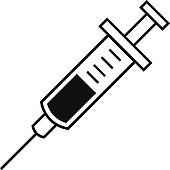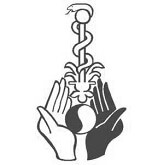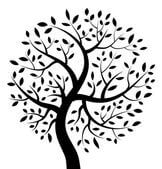
B.A.R.F. (Bones And Raw Food)
BARF is a simple but admittedly more complex concept. The dog is by nature a carnivore. A carnivore should therefore eat meat. Carnivores eat other animals in nature, since animals are made of flesh and a few other components. Consequently, the seizure of animals, their meat and other components the only correct and the only natural food for them. Nature has all animals given a digestive system that is tailored to certain food.
All living things, except of course dogs (or cats) eat what nature has just offered. They get sometimes more, sometimes less of various nutrients. It is believed that over time the nutrient needs are met. Barfen is easy. Barfen is just feed dogs. There is no reason to make a science of it. It does not matter if the dog gets a little grain or 30% instead of 10% vegetables. It does not matter if the dog eats twice a day or more than once every two days. It is crucial that you feed varied, the food is fresh and preferably untreated.
For better understanding
The wolf and so the dog eats out its prey and fruit, herbs, berries, grasses, roots, insects and also the feces of herbivores. It is eaten by the larger bones, a large part of the skin and coat and a part of the gastrointestinal contents everything. The fact that the wolf eats virtually all his prey, he gets the vital nutrients for him as protein, fat, minerals, vitamins, enzymes and fiber. Unlike herbivores dog has no digestive enzymes in saliva and produces comparatively very little saliva. Dog saliva is very viscous and serves as a lubricant for the food. The stomach of the dog is very large compared to herbivores – eight times as big as a horse stomach, in relation to body weight. The production of digestive juices carried the dog through the key stimulus “meat”.
The intestine of the dog is very short compared to the gut of the herbivore. Complete digestion of meat and bone takes in dogs up to 24 hours; Herbivores need four to five days for digestion. If now all this sums up everything clearly suggests, the dog with meat, not grain (which is mainly contained in finished feed) to feed. The high cereal content in finished feed can cause major health problems in dogs. Gastric juices are not sufficiently formed, because the key stimulus “meat” is missing, hence bacteria are not killed, there is faulty fermentation, diarrhea, stomach turns and parasite infestation. Also pancreas problems may arise because it is overwhelmed by the production of enzymes for the digestion of grain (are barely enzymes in highly heated prepared food available). Even cooking of animal proteins changed many of the amino acid chains and makes them for the dog mostly unusable. Protein is difficult to digest by boiling, also this important minerals go lost.
In Generall : “barfed dogs are healthier!”
They have
• beautiful, shiny coat.
• fewer digestive problems and “winds”
• Do not smell as stringent dog
• Healthier teeth and
• Greater Life
What we feed our dogs:
Fresh meat, fish, fruits and vegetables (raw and mashed), good quality herbs and oils and additives.
Waste such as Hooves, horn, beaks, feathers even feces and urine, which is otherwise simply “shredded” into finished feed, preservatives, coloring agents do not come into the cup of our dogs!
I can go into the preferences and intolerances (such as allergies)!
Raw food can be much better utilized by the dog, which naturally reduces the amounts of droppings to a minimum.
Meaty and Bones: Skeleton from the chicken / chicken throught, chicken wings, chicken legs, whole chickens, turkey necks, ox / calf / cow towing, lamb / veal ribs, lamb spine, rabbit, veal and beef bones (not at the beginning – too hard)
Muscle meat: poultry, cattle, horses, deer, sheep, lamb, rabbit, head meat, gizzard, cheek meat, mouth meat, diaphragm (hanger steak or thin skirt), stitch meat, tongue, heart (but should not be the sole lean meat source)
Cartilage: pharynx, larynx
Offal: rumen (may be also filled), leaves stomach, lungs, liver rarely
Fish: preferably all types of saltwater fishing wg. the iodine content, it can be just as freshwater fish are fed, as long as the dog is not purely fed fish
Vegetables: Leafy vegetables such as lettuce, dandelion, arugula, watercress, lettuce, carrots, zucchini, squash, cucumbers, fennel, celery, beetroot, etc. (in small amounts: cabbage, broccoli, spinach, asparagus) cooked: potatoes
Fruit: apple, pear, nectarine, peach, berries, grapes (minimal), kiwi, bananas, etc. The fruit should preferably be overripe and gutted
Dairy products: butter milk, yoghurt, cottage cheese, fat curd, cottage cheese, kefir
Oils: linseed oil, coconut oil, olive oil, salmon oil, rapeseed oil, hempseed oil, etc
Other additions: Eggs (toh or cooked) yeast, algae, herbs, occasionally garlic, calcium (made of very fine blended eggshells)
Cereal: I do not feed, but may be fed in small amounts … we do starting and cooked noodles
What must not in the cup?
Pork should be fed only cooked (unless you have a very reliable source)
Nightshadow plants (tomatoes, avocados, onion …) should not be feeded to the dog as they contain solanine poison.
Bone just raw and never feed cooked! When cooking the bones moisture is removed and it becomes brittle! Generally always feed meaty bones, or meat meals in small quantities to feed (clogging)
What’s with parasites, bacteria and salmonella?
The dog has the digestive system of a carnivore. This means your dog’s digestion is set by nature on flesh and bone. The stomach of the dog is strong enough to digest bone and cartilage. Bacteria and salmonella are everywhere, but by sufficiently produced gastric juices all harmful bacteria can be killed. It is very rare to parasite infestation. Quite different as in finished feed!
Where do I get what?
Meat and bones can usually be purchased very cheap in the surrounding Butchers. In order to avoid the crush, many butchers already offers the meat “minced” and portioned bones .
see also on the links page !!

ÖKV – Österreichischer Kynologenverband FCI – Fédération Cynologique Internationale ÖHV – Österreichischer Hundesportverband ÖDK – Österreichischer Dobermannklub Dobermannverein Augsburg – Ortsgruppe Lechfeld Workingdog – Information Database around Wroking Dogs (e.g. Pedigree) Opusmeum – Dobermannzucht Opus-Meum Hundeausbildungszentrum ÖHV Wattens – Verein von Tom und Sabine dobermandiversityproject – Forschung in der genetischen Dobermann Gesundheit Food https://www.4canis.ch/ – Natural dog food Tierhotel – Frostfutterversand other ZUCHTORDNUNG_NEU2015 – Dobermann Zuchtordnung […]

Dilated cardiomyopathy (DCM) It involves damage to the heart muscle, in which the wall thickness and contractile force decreases and the heart simultaneously increases in size. Thus, the performance of the heart, which can lead to a progression of the disease to death diminishes. It is a very aggressive disease that affects 60% of Dobermans. With early detection […]

FEDERATION CYNOLOGIQUE INTERNATIONALE (AISBL) SECRETARIAT GENERAL: 13, Place Albert 1er B – 6530 Thuin (Belgique) ______________________________________________________________________________ 17.12.2015/ EN FCI-Standard N° 143 (VALID FROM 01.08.2016) DOBERMANN TRANSLATION: Dobermann Council of K.U.S.A. (Kennel Union of Southern Africa). Mrs Christina Bailey. Mrs Renée SporreWilles. Revised by VDH/Uwe Fischer. ORIGIN: Germany. DATE OF PUBLICATION OF THE OFFICIAL […]

Homeopathy for dogs Emaciation: Iodine and in young animals Abrotanum Abscesses: Hepar, alternatively Myristica After disease: Nitric acid, Ruta, Ignatia or Apis (with hives) Allergy: Apis Anal glands: Aesculus, in chronic cases Silicea Fear: Belladonna, when Eve noise Borax in claustrophobic silver nitrate Appetite disorders: Chininum arsenicosum, Natrium muriaticum and phosphorus in gradually potassium Weakness as […]

I run a small breed with a maximum of one litter per year. The aim is to have an official Doberman breeder again in Vorarlberg. Last official breeder was the Kennel of Hochstede (Warger Herbert), which has stopped after more than 30 years of successful breeding. Our kennel is approved by the FCI and fullfill […]

B.A.R.F. (Bones And Raw Food) BARF is a simple but admittedly more complex concept. The dog is by nature a carnivore. A carnivore should therefore eat meat. Carnivores eat other animals in nature, since animals are made of flesh and a few other components. Consequently, the seizure of animals, their meat and other components the only correct and the […]
in Gedenken / In memorial